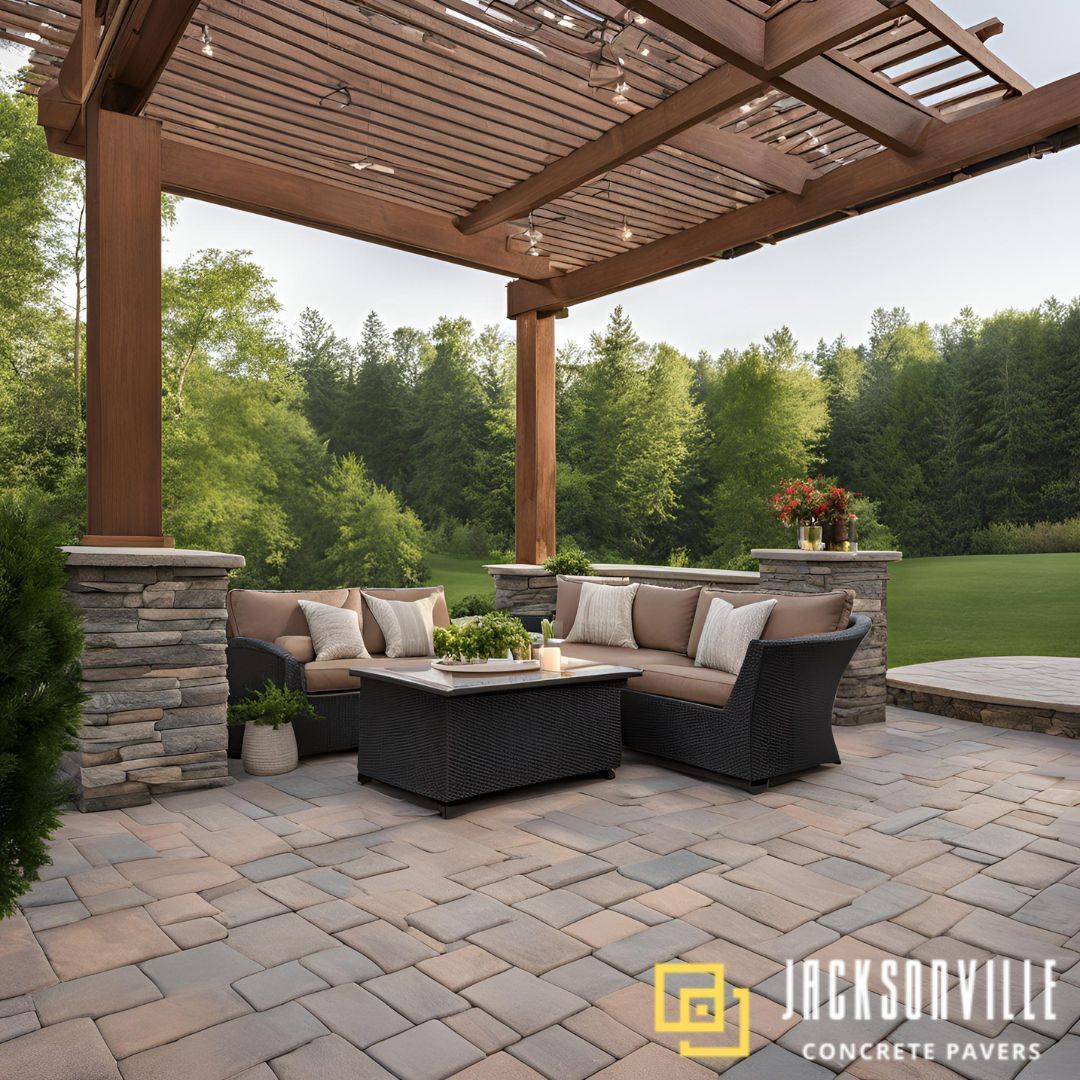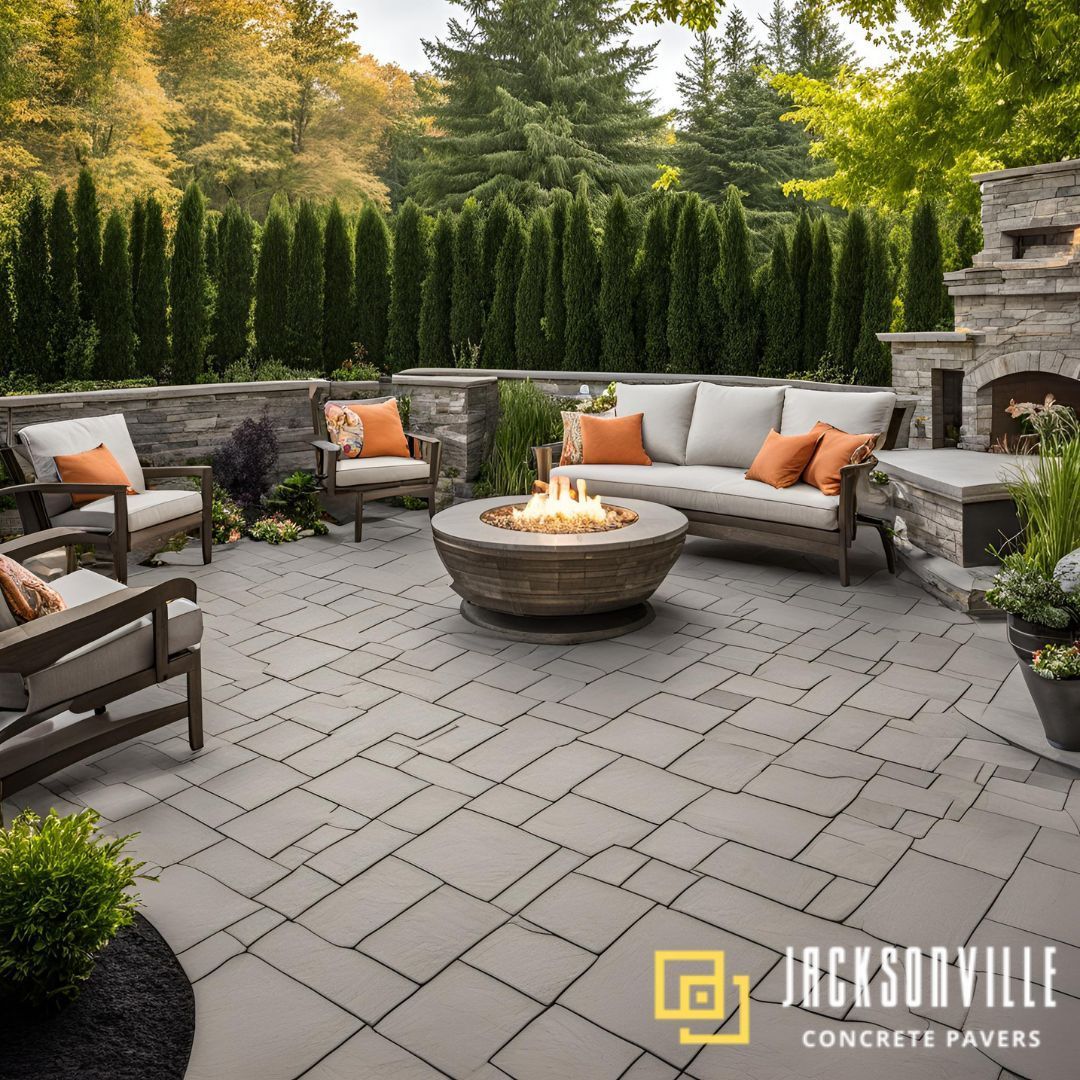Concrete Patio vs. Wooden Deck: You Won’t Believe the Winner!
Choosing the right outdoor space is crucial for both aesthetics and functionality, and the debate between a concrete patio and a wooden deck is a common one. Each option offers unique benefits, but which one truly stands out?
This article highlights the pros and cons of both, helping you make an informed decision for your home. Curious to know the winner? Read on to discover which option might be the perfect fit for your backyard oasis.
Introduction to Concrete Patios and Wooden Decks
When it comes to outdoor living spaces, two popular choices are concrete patios and wooden decks. Both have their unique benefits and features, making it essential to understand what each option offers.
What is a Concrete Patio?
A concrete patio is a flat, hard surface made from poured concrete. It is a popular choice used in backyards as a place for outdoor furniture, grills, and entertainment areas.
Concrete patios are known for their durability and low maintenance needs. They can be customized with different finishes, such as stamped patterns or colored stains. Because they are solid and sturdy, concrete patios can last for many years with minimal upkeep.
What is a Wooden Deck?
A wooden deck is an elevated outdoor platform usually made from wood. It is often attached to the house and can provide a warm, natural appearance. Wooden decks are great for creating cozy outdoor spaces and can be built to fit any yard size or shape. They offer flexibility in design and can include additional features like built-in benches and planters. However, wooden decks require frequent maintenance, such as sealing and staining, to protect against weather damage and extend their lifespan.
Concrete Vs Decking Cost Comparison
When choosing between a concrete patio and a wooden deck, understanding the costs involved is crucial. Let’s unravel the initial costs and long-term expenses of both options.
Initial Cost of Concrete Patios
Concrete patios are generally more affordable when it comes to the initial setup. Here are some key points:
- Material Cost: Concrete is cheaper than wood. The cost of concrete ranges from $6 to $10 per square foot.
- Labor: Installing a concrete patio is straightforward and often quicker, reducing labor costs.
- Total Initial Cost: On average, expect to pay between $1,500 and $3,000 for a standard concrete patio.
Initial Cost of Wooden Decks
The average cost of decks, on the other hand, comes with a higher initial price tag. Here’s why:
- Materials: Quality wood, such as cedar or redwood, costs more. Prices range from $15 to $25 per square foot.
- Labor: Building a wooden deck is more labor-intensive, increasing the deck installation cost.
- Total Initial Cost: Typically, the cost for a wooden deck ranges from $4,000 to $10,000 for a standard size.
Long-term Cost Analysis
Beyond the initial costs, it’s important to consider the long-term expenses of maintaining these outdoor spaces.
Concrete Patios
- Maintenance: Concrete patios require minimal maintenance. Occasional cleaning and sealing are usually sufficient.
- Durability: Concrete is highly durable and can last for decades with proper care.
- Repair Costs: Repairs are rare and usually inexpensive.
Wooden Decks
- Maintenance: Wooden decks need ongoing maintenance, including staining, sealing, and sometimes replacing damaged boards.
- Durability: While a wooden deck can last long, it requires more frequent upkeep to prevent rot and insect damage.
- Repair Costs: Repairs can be costly due to the need to replace or treat wood periodically.
While wooden decks offer a natural and classic look, concrete patios present a more cost-effective and durable option.
Durability and Longevity
When choosing between the two options, consider their durability and longevity. Both options have their strengths, but one clearly stands out.
Average Lifespan of Concrete Patios
Concrete patios are known for their long lifespan. A well-constructed concrete patio can last anywhere from 25 to 50 years. This longevity is due to concrete's robustness and resistance to the elements.
Average Deck Lifespan
Wooden decks, on the other hand, usually have a shorter lifespan. Most wooden decks last between 10 to 15 years. This shorter lifespan is due to wood's susceptibility to weathering, rotting, and insect damage. Routine maintenance, including staining, sealing, and replacing damaged boards, is necessary to extend the life of a backyard deck.
Factors Affecting Durability
Several factors influence the durability of both concrete patios and wooden decks:
- Climate: Harsh weather conditions can impact both materials. Concrete can crack in extreme cold, while wood can warp in high humidity.
- Maintenance: Regular upkeep can significantly extend the life of both options. Concrete requires sealing, and wood needs staining and sealing.
- Quality of Materials: Durable materials ensure better longevity. For concrete, a proper mix and curing process are crucial. For wood, choosing pressure-treated wood or naturally resistant woods like cedar or redwood can help.
- Usage: Heavy use and high foot traffic can wear down both surfaces. Concrete can withstand more heavy usage compared to wood.
Concrete patios often come out on top due to their superior durability and longer lifespan. Regular maintenance and proper material selection can enhance the longevity of either option, but concrete's resilience makes it a clear winner for long-term investment.
Maintenance Requirements
Maintaining outdoor spaces is key to keeping them looking great and lasting long. Both concrete patios and wooden decks need proper maintenance. However, the type and frequency of maintenance vary significantly between the two.
Maintenance Needs of Concrete Patios
Here are the basic maintenance steps for concrete patios:
- Cleaning: Sweep regularly to remove dirt and debris. Wash with mild soap and water occasionally.
- Sealing: Apply a sealant every 2-3 years to protect against stains and water damage.
- Repairs: Fix any cracks as soon as they appear to prevent them from spreading.
Maintenance Needs of Wooden Decks
Wooden decks require more frequent and detailed maintenance than concrete patios. Key steps include:
- Cleaning: Sweep often to remove leaves and dirt. Use a wood cleaner and a brush to deep clean annually.
- Staining and Sealing: Stain and seal the wood every 1-2 years to protect against moisture damage, UV rays, and pests.
- Inspections and Repairs: Check for loose boards, nails, and other damage regularly. Replace any damaged wood promptly to prevent further issues.
Aesthetic Appeal
Both concrete patios and wooden decks can enhance the look of any outdoor space. However, they offer different styles that cater to various tastes.
Visual Appeal of Concrete Patios
Concrete patios offer a sleek, modern look. They can be stained or stamped to mimic other durable materials like stone or brick, providing endless design possibilities. Concrete's smooth surface and clean lines can make a backyard look polished and sophisticated. With the right finish, a concrete patio can blend seamlessly with contemporary homes.
Visual Appeal of Wooden Decks
Wooden decks, on the other hand, provide a warm and natural charm. They fit well with traditional and rustic home designs. The natural grain and color of wood add a cozy and inviting feel to any outdoor area. Over time, wood can weather to a beautiful patina, adding character and depth to the deck's natural appearance.
Environmental Impact
Choosing materials that are kind to the environment helps reduce your carbon footprint. Both concrete patios and wooden decks have their pros and cons in this regard.
Eco-friendliness of Concrete Patios
Concrete patios are made from natural resources like limestone, clay, and sand. While the production of concrete does produce carbon emissions, advances in technology are helping to make it more sustainable.
For example, some manufacturers now use recycled materials in concrete mixtures, reducing the need for new raw materials. Additionally, concrete is extremely durable, meaning it lasts longer and needs less frequent replacement, which is a plus for the environment.
Eco-friendliness of Wooden Decks
Wooden decks, on the other hand, are made from renewable resources. When sourced from responsibly managed forests, wood can be a very eco-friendly choice. However, wood requires treatments to prevent rot and insect damage, which can involve chemicals that are harmful to the environment. Additionally, wooden decks need routine cleaning and may need to be replaced more often than concrete patios, which can increase their overall environmental impact.
In the battle of concrete patios vs. wooden decks, the winner depends on what you value most. Concrete patios, despite their initial carbon footprint, offer longevity and the possibility of using recycled materials. Wooden decks, while renewable, may require more frequent upkeep and replacement. To make the most eco-friendly choice, look for concrete with recycled content or sustainably sourced wood treated with environmentally safe products.
Weather Resistance
Concrete patios and wooden decks each react differently to weather. Concrete is tough and strong, making it resistant to adverse weather conditions. It can handle heavy rain, snow, and intense sun without much trouble. Wooden decks, on the other hand, can be more sensitive.
Weather Impact on Concrete Patios
Rain and snow have little effect on a well-sealed concrete patio. The material doesn't warp, rot, or suffer significant damage from moisture. During hot summers, concrete can get very hot, which might be uncomfortable for bare feet. In freezing temperatures, though, untreated concrete might crack. Using a proper sealant can prevent most weather-related issues and extend the patio's lifespan.
Weather Impact on Wooden Decks
Wooden decks are more vulnerable to weather changes. Rain can cause wood to swell and eventually rot if not treated properly. In snowy regions, the weight of snow can put stress on the deck structure, leading to potential damage. Sun exposure can fade the wood's color and dry it out, making it brittle. Regular maintenance, like staining and sealing, is essential to protect wooden decks from weather damage.
Safety Considerations
Both options have unique features that contribute to a safe outdoor space. It’s important to understand these safety aspects to make the best choice for your home and family.
Safety Features of Concrete Patios
Concrete patios are known for their durability and stability. Here are some key safety features:
- Slip-Resistant Surfaces: Modern concrete patios can be treated to have slip-resistant surfaces, reducing the risk of falls, especially when wet.
- No Splinters: Unlike wood, concrete doesn’t splinter, making it safer for bare feet and paws.
- Fire Resistance: Concrete is non-combustible, which means it won't catch fire. This is especially important if you plan to have a grill or fire pit on your patio.
- Stability: Concrete patios are solid and don’t shift or warp over time, providing a consistent and even surface.
Safety Features of Wooden Decks
Wooden decks offer a different set of safety benefits:
- Non-Slip Coatings: Wooden decks can be treated with non-slip coatings to prevent accidents.
- Cooler Surface: Wood stays cooler underfoot in direct sunlight compared to concrete, which can become very hot.
- Rounded Edges: Many wood decks are designed with rounded edges and smooth finishes, reducing the risk of injuries from sharp corners.
- Natural Flexibility: Wood has a natural give, which can be gentler on joints and safer for children’s play.
Both options have strong safety features, but the best choice depends on your specific needs and environment.
Final Thoughts
Choosing between a concrete patio and a wooden deck involves considering various factors such as cost, durability, maintenance, aesthetics, environmental impact, weather resistance, and safety. For homeowners seeking a low-maintenance and durable outdoor space, a concrete patio is often the better choice. Its ability to withstand various weather conditions, minimal maintenance requirements, and longer lifespan make it a reliable investment. Wood decks, on the other hand, are ideal for those who prefer a natural look and are willing to commit to regular upkeep.
Jacksonville Concrete Pavers provides expert concrete patio installation services, ensuring you get a high-quality, durable outdoor space. Contact them today for a free consultation and free estimate to transform your backyard with a beautiful concrete patio.
Frequently Asked Questions
Is it better to have a deck or concrete patio?
Choosing between a deck and a concrete patio depends on your needs and aesthetic preferences. A deck offers a warm, natural look and is great for uneven ground level. A concrete patio, on the other hand, is durable, low-maintenance, and can handle heavy furniture and high foot traffic. It also provides a sleek, modern appearance.
Is it cheaper to lay a patio or decking?
Laying a patio is typically cheaper than building a deck. Concrete and pavers are more affordable than wood and composite decking materials. Additionally, patios require less maintenance over time, which can save money in the long run.
Why is concrete better than wood?
Concrete is better than wood for several reasons. It is more durable and can withstand harsh weather conditions. Concrete is also low-maintenance, resistant to pests, and has a longer lifespan. Additionally, concrete surfaces can be customized with various finishes and designs, making them versatile for different styles.
You might also like

Where honesty & trust meets quality service. We are a third-party, all referrals are sent to a licensed contractor in Jacksonville, FL.
Call or Text us at (904) 842-3929 for a free estimate. We look forward to helping you with your concrete paving project.
Working hours
- Mon - Sun
- -
All Rights Reserved | Jacksonville Concrete Pavers | 2025



